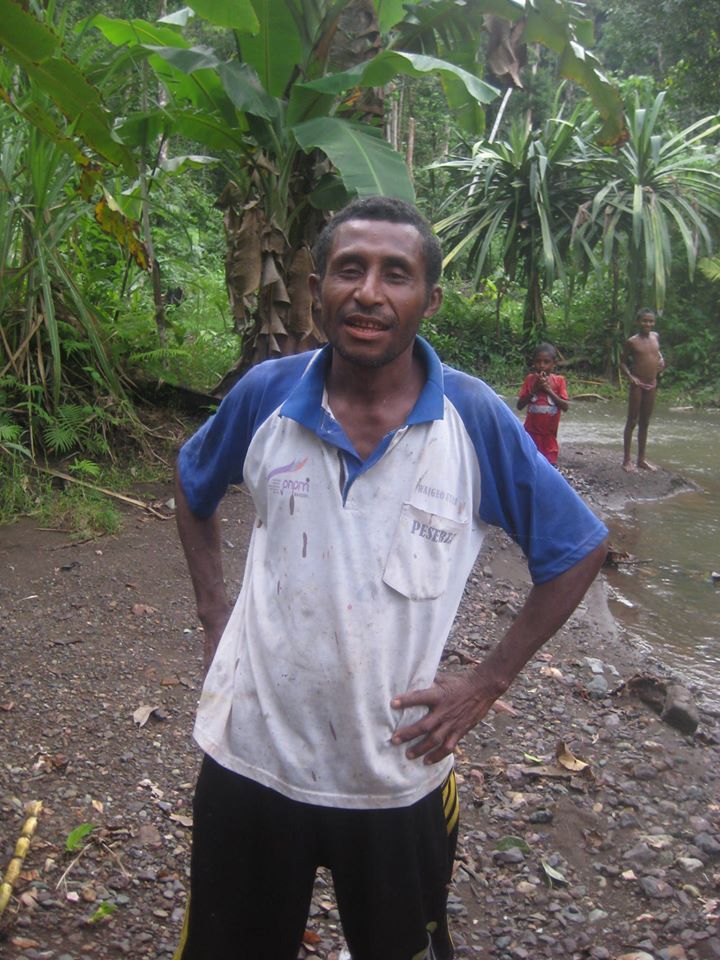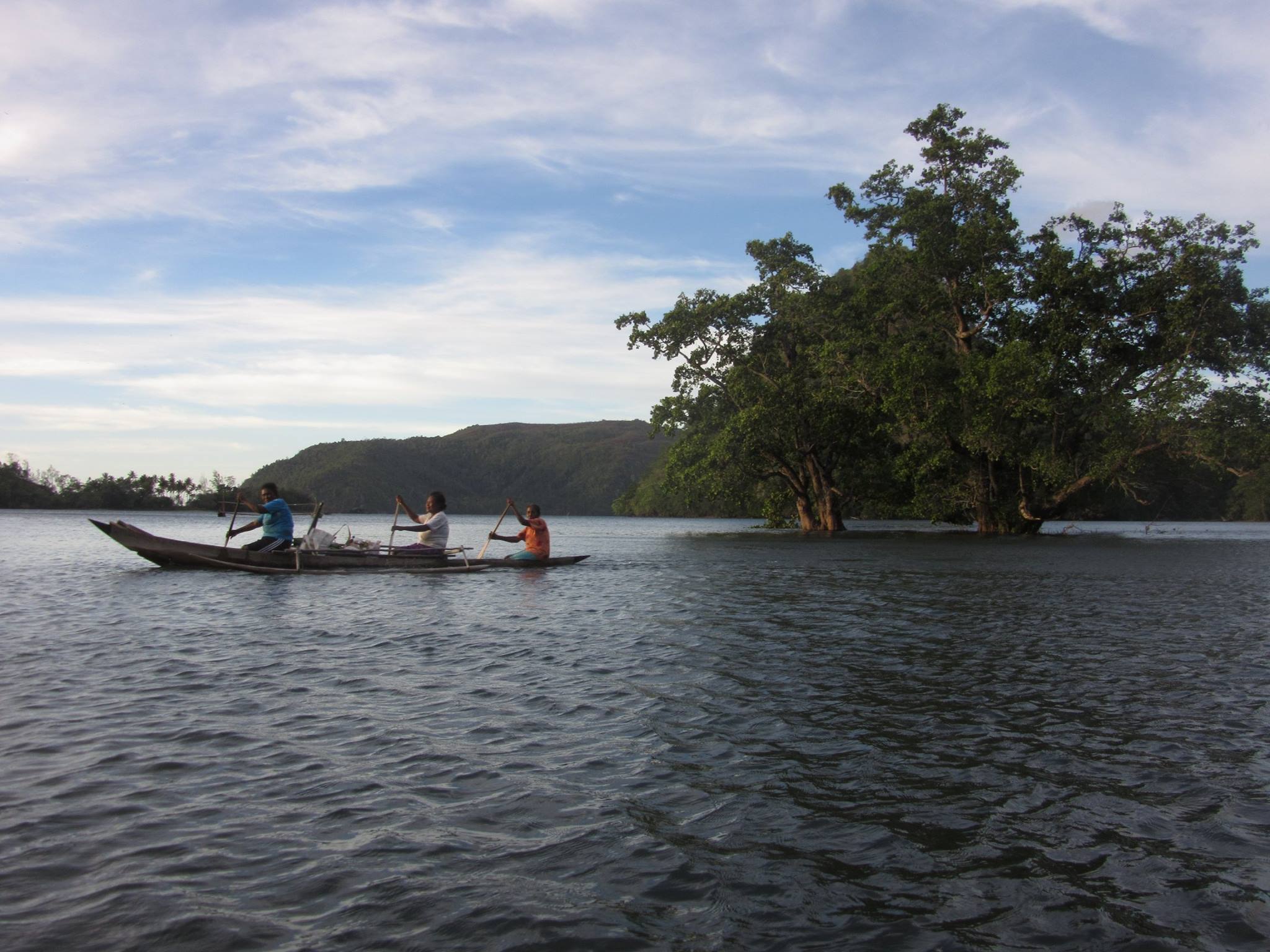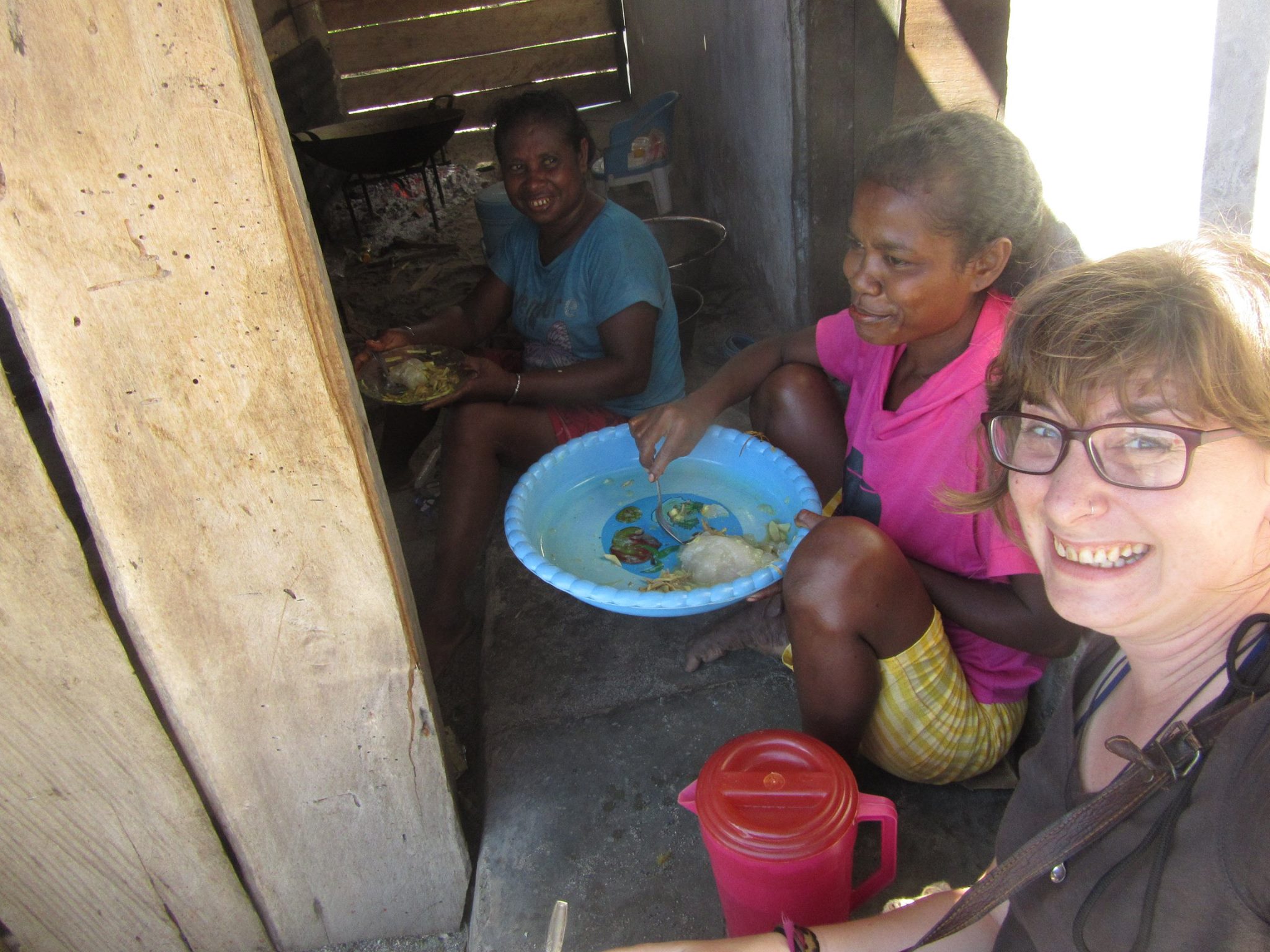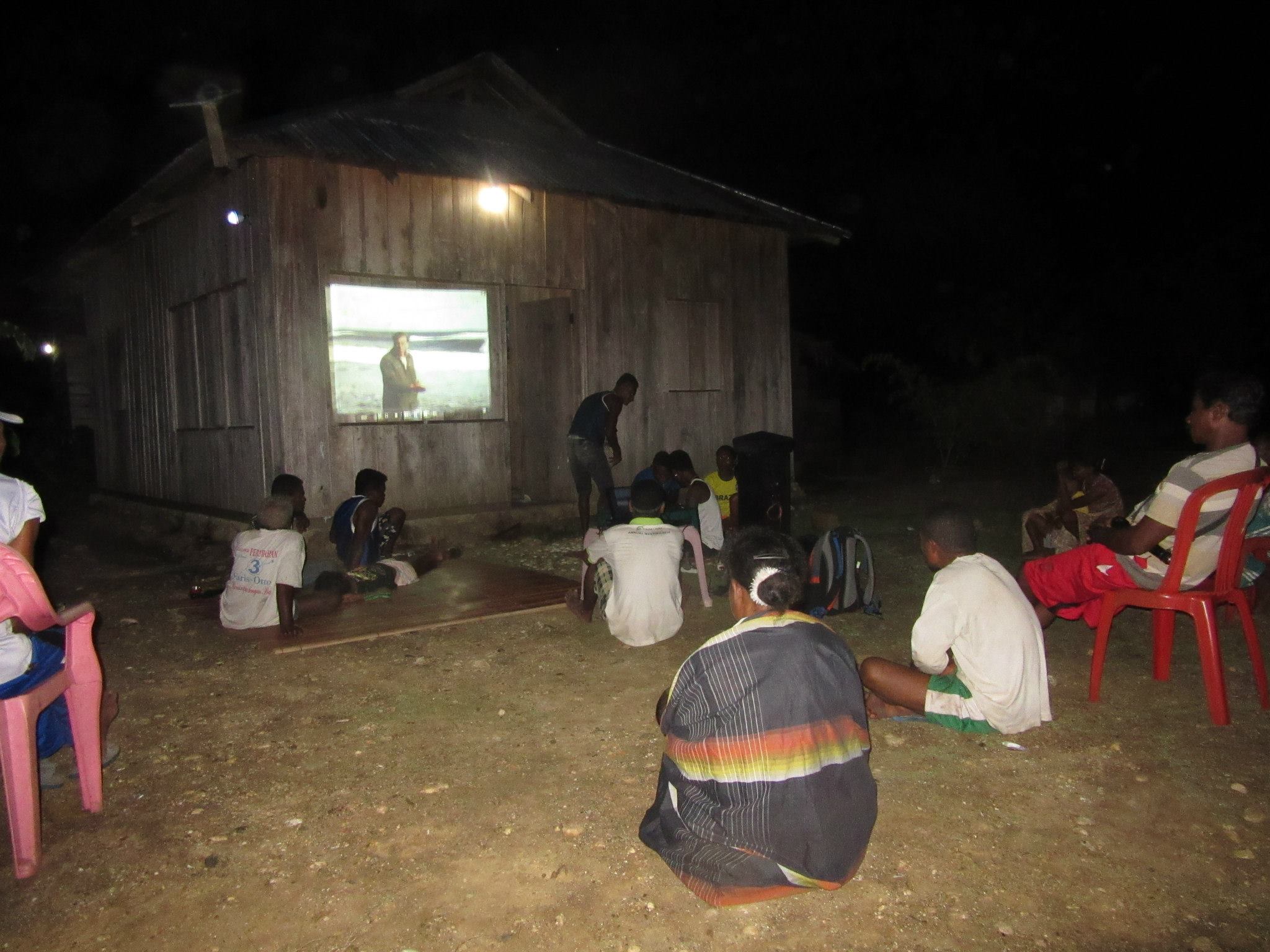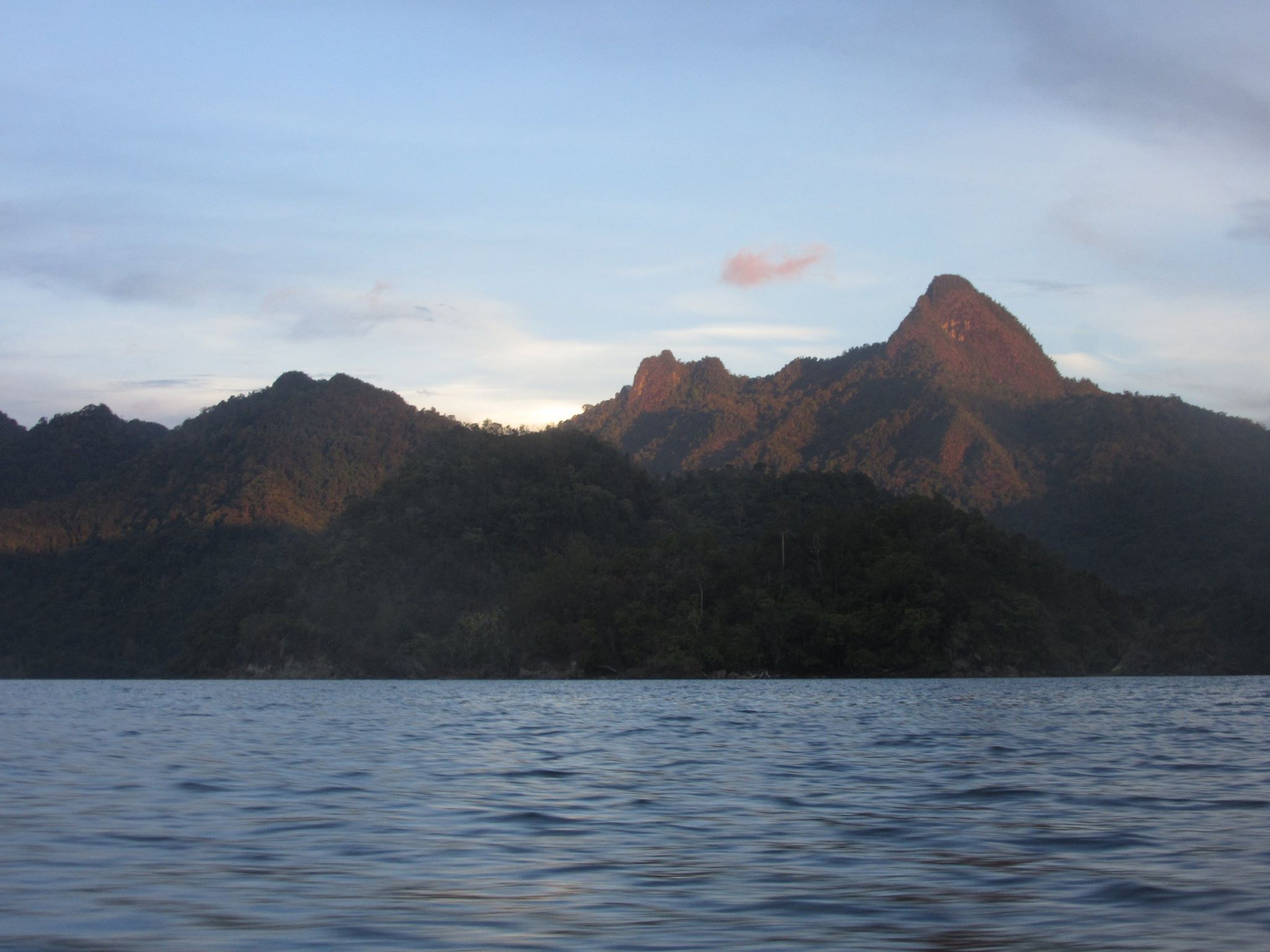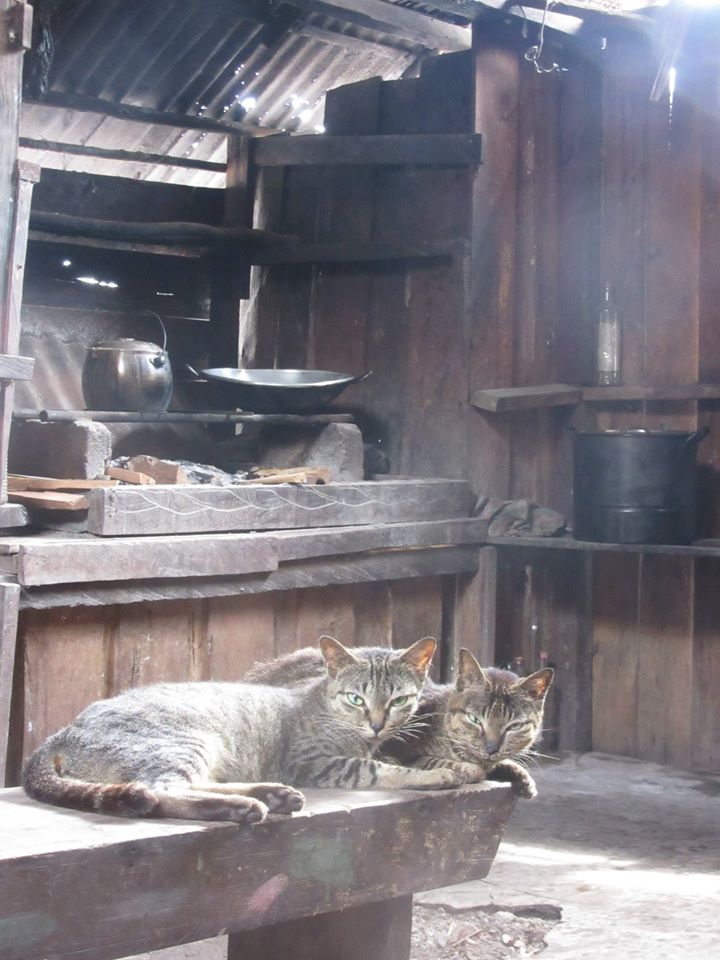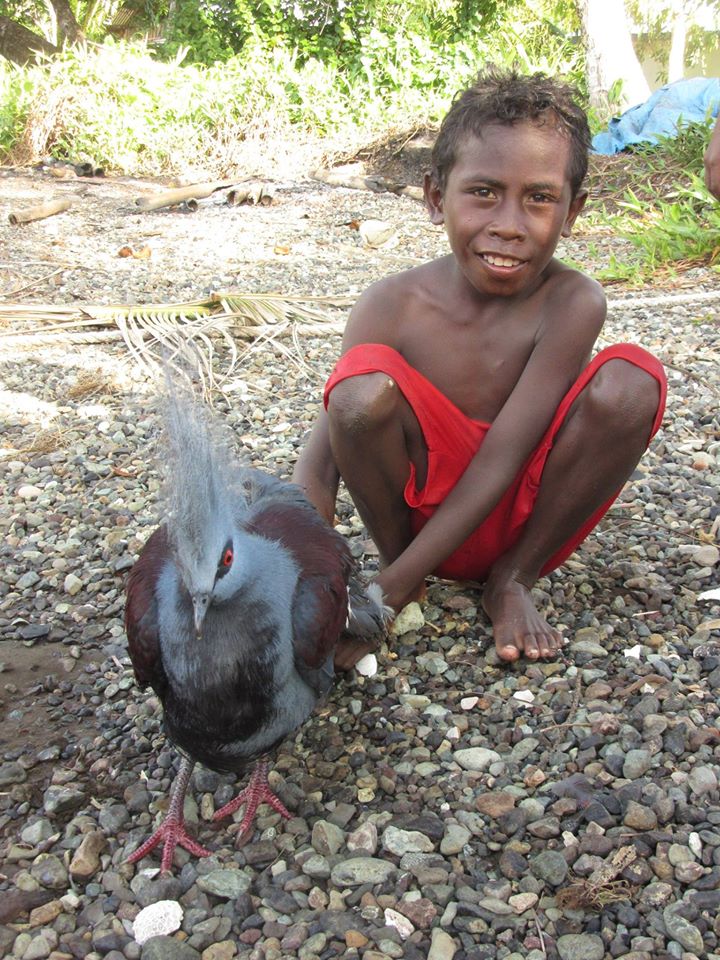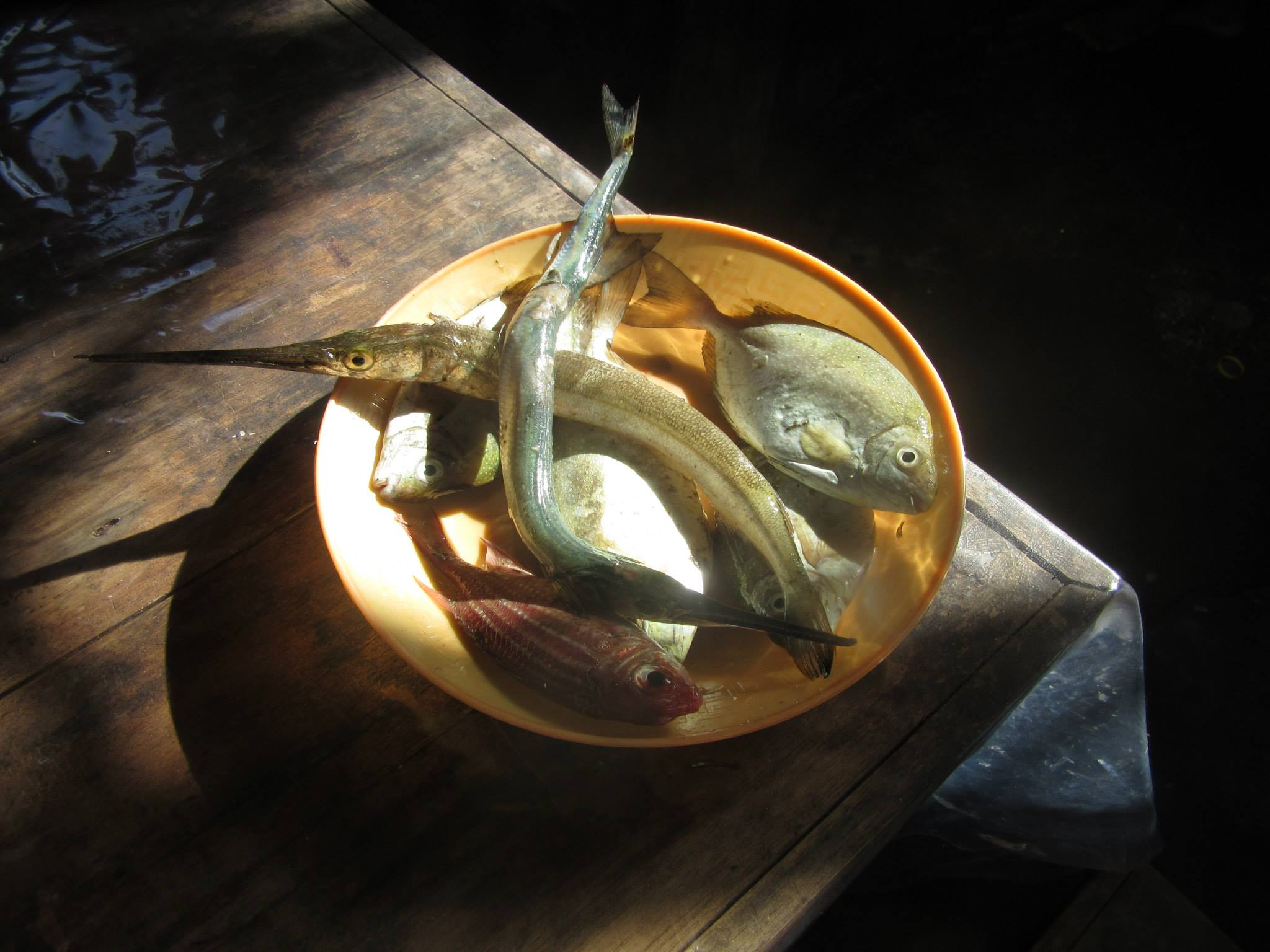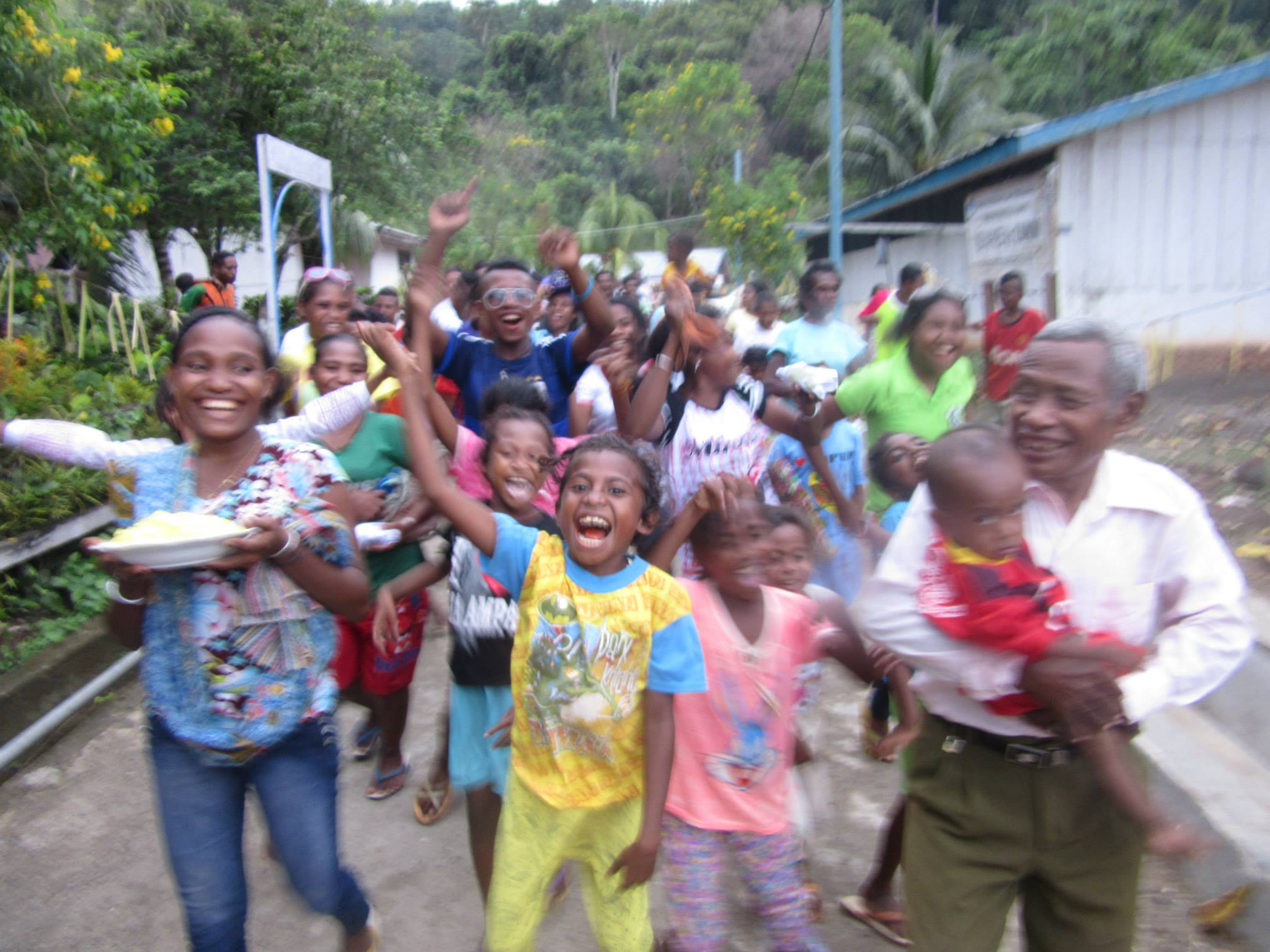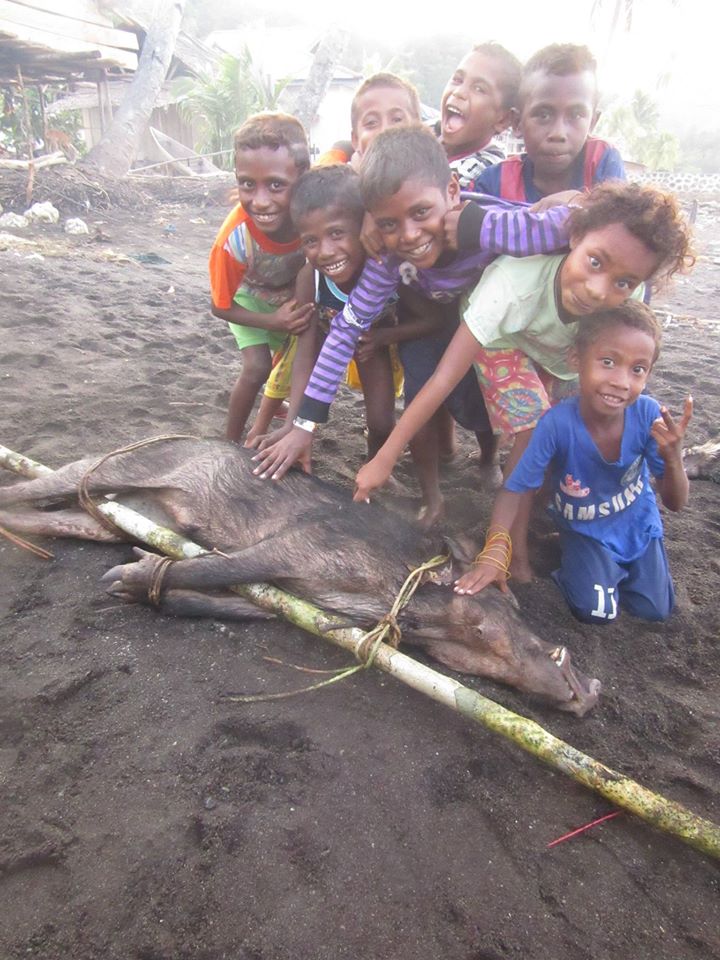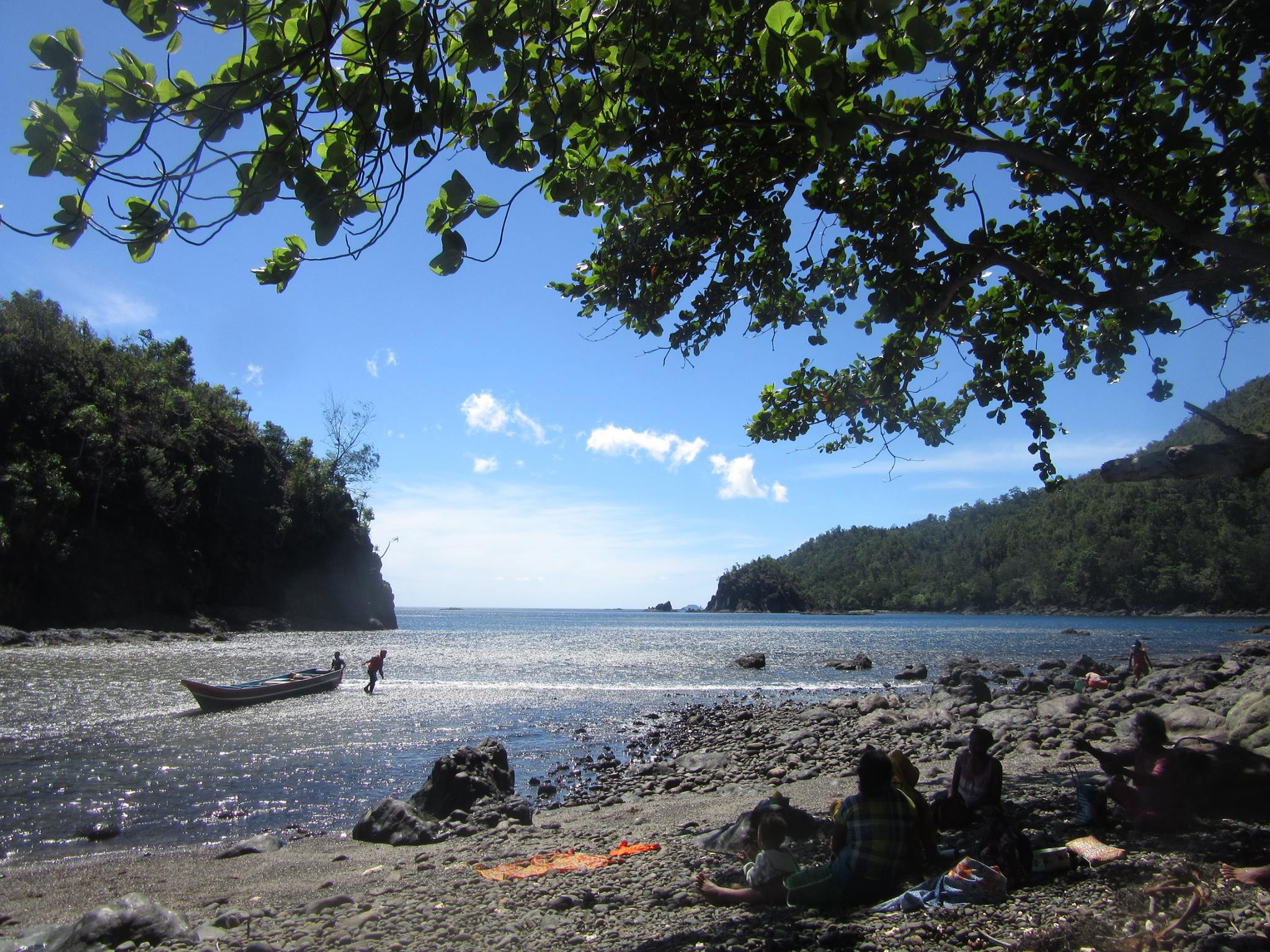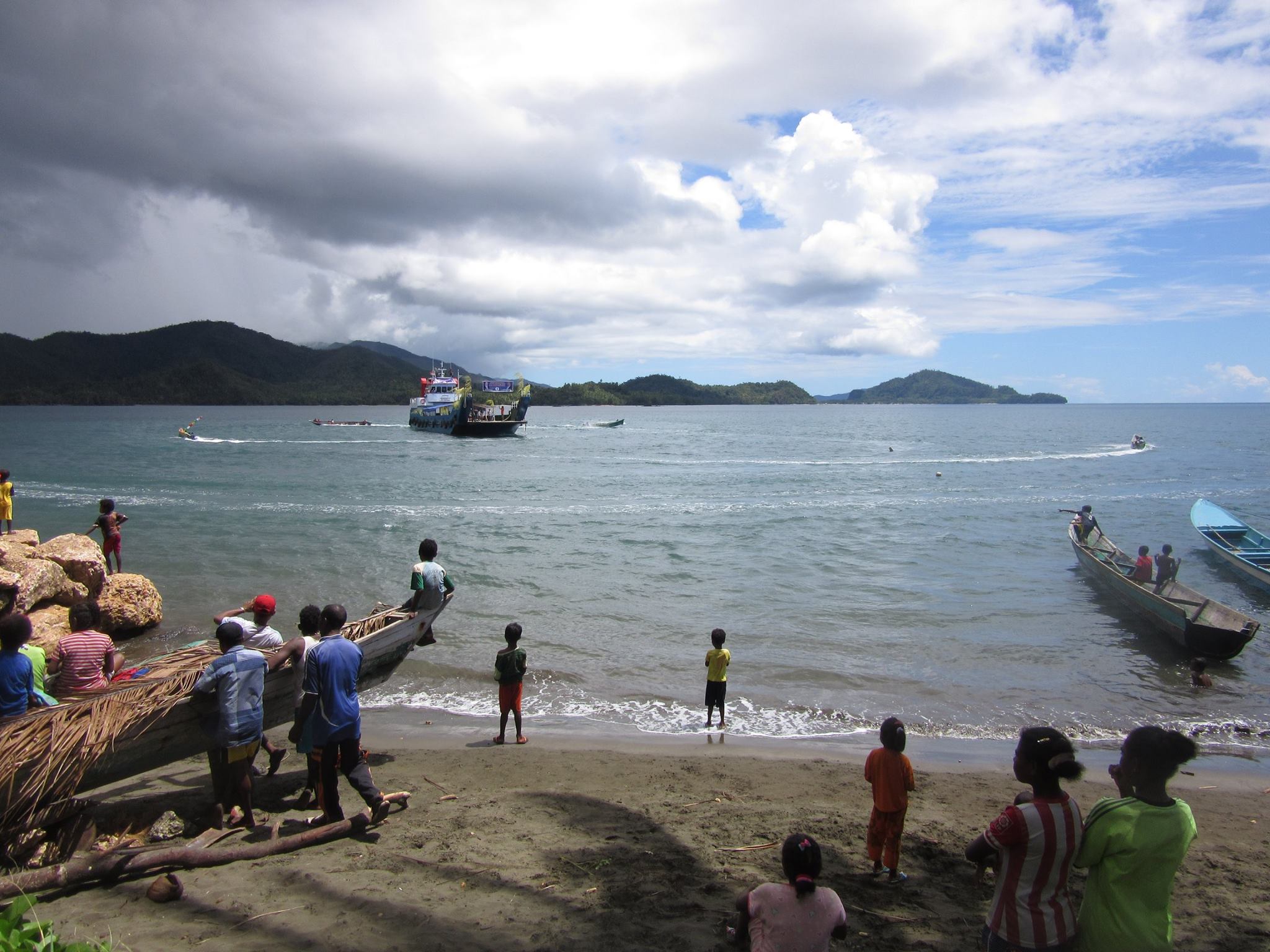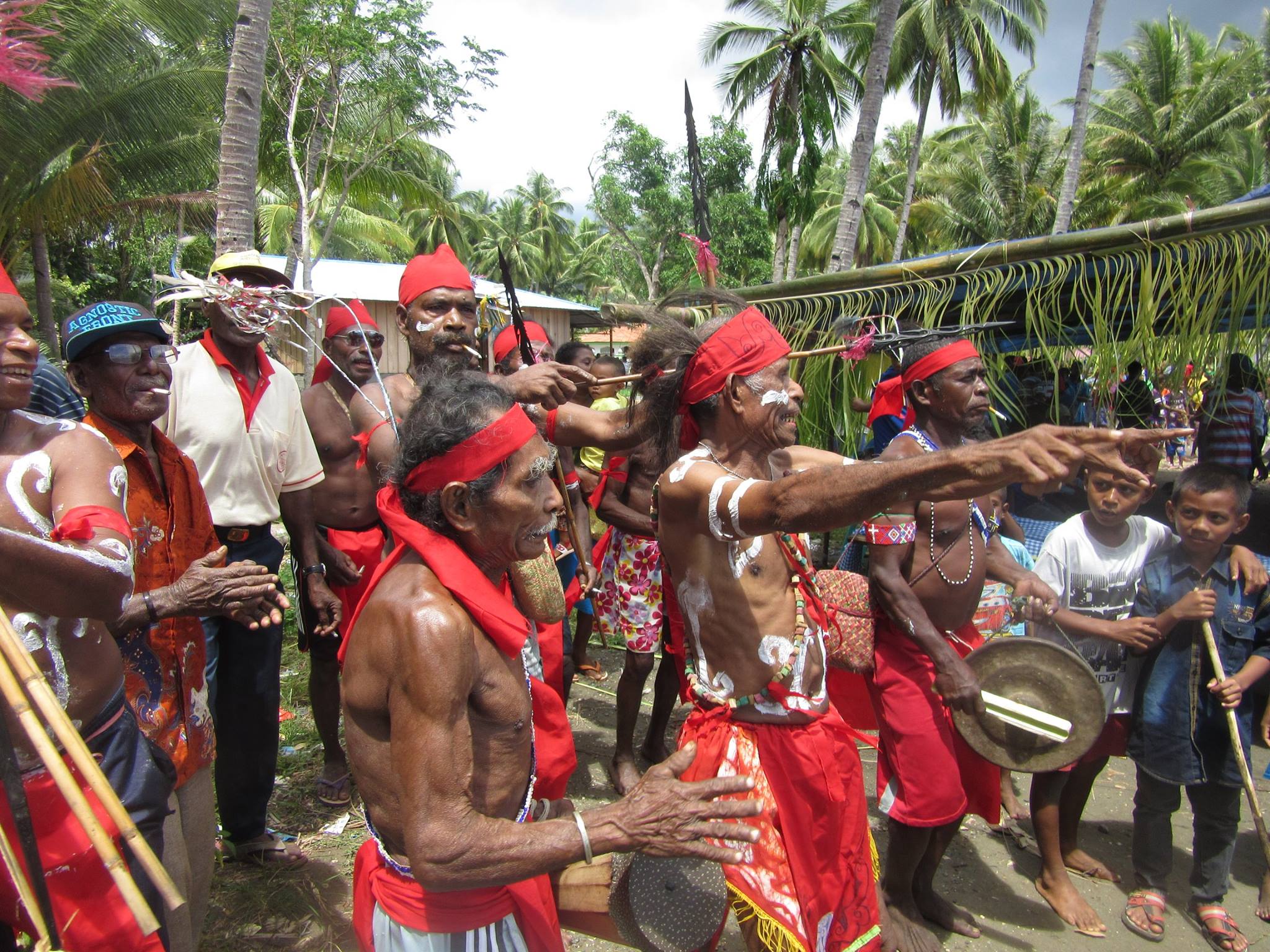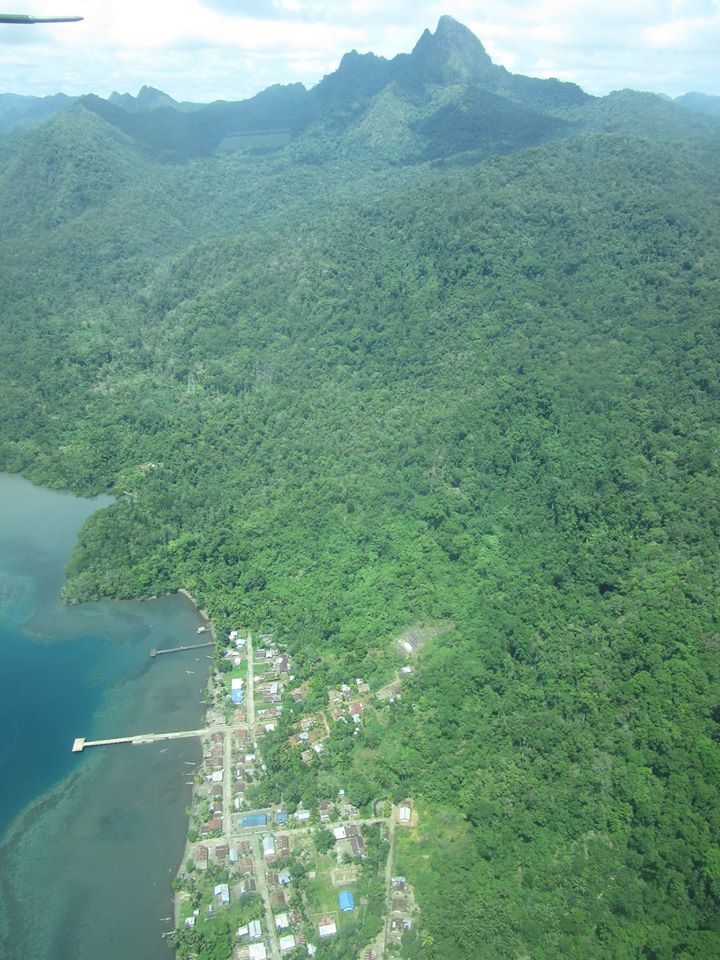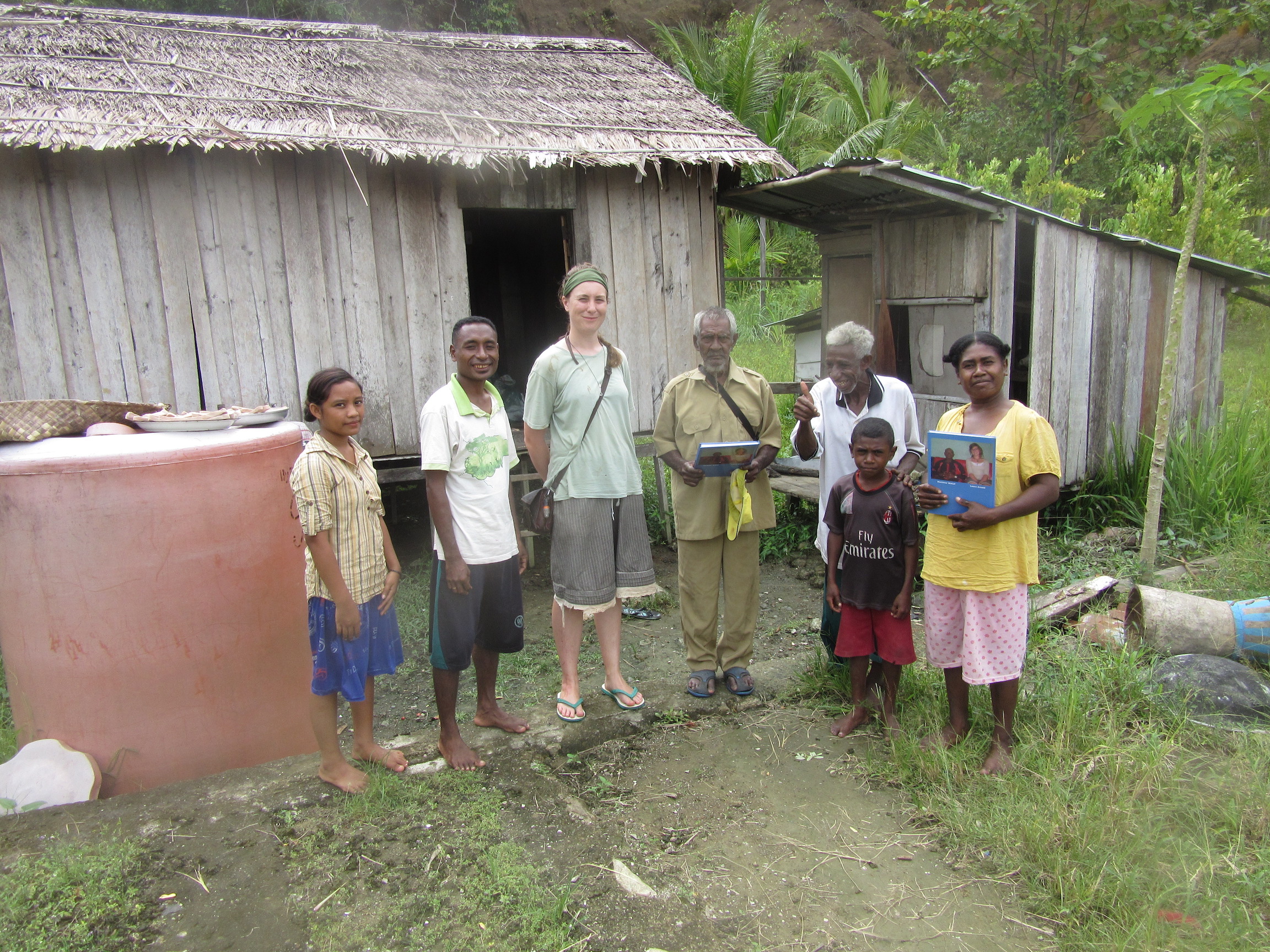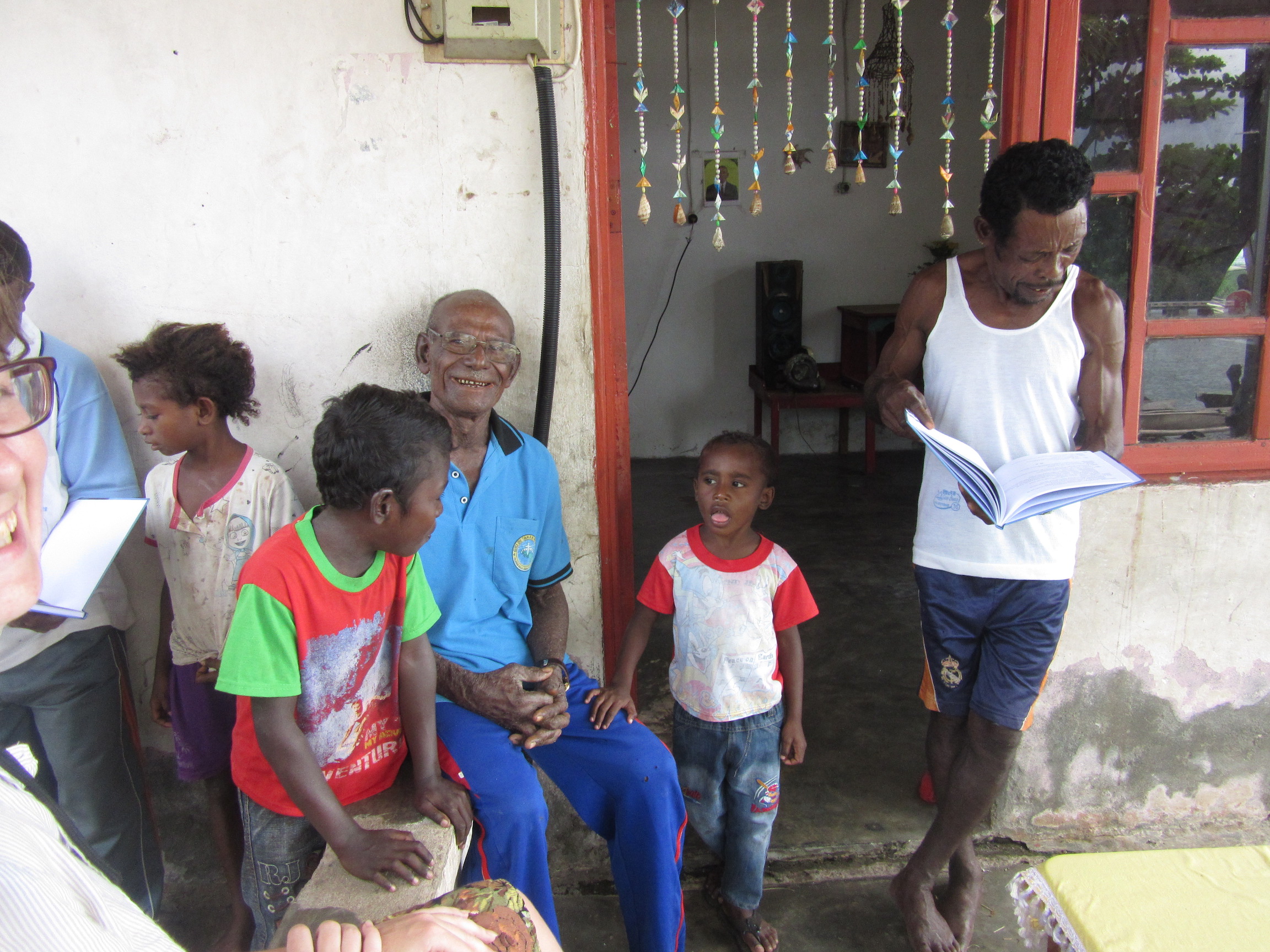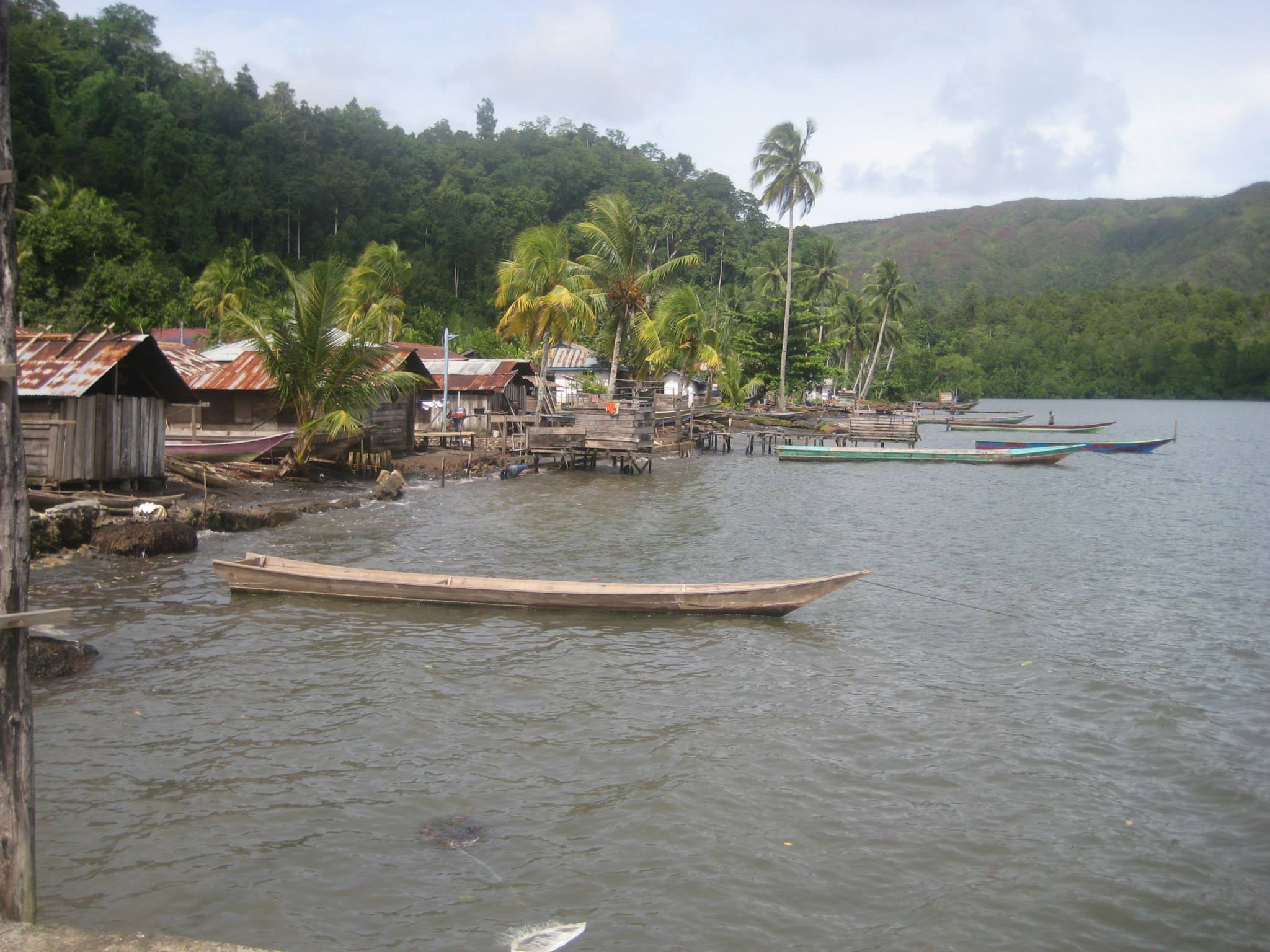
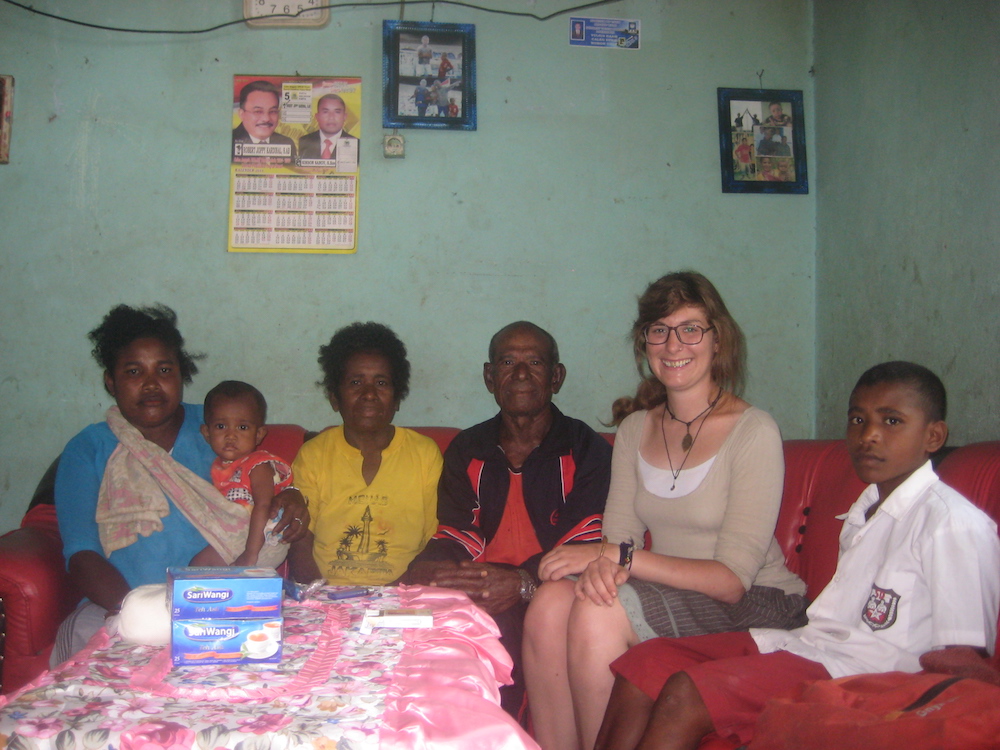
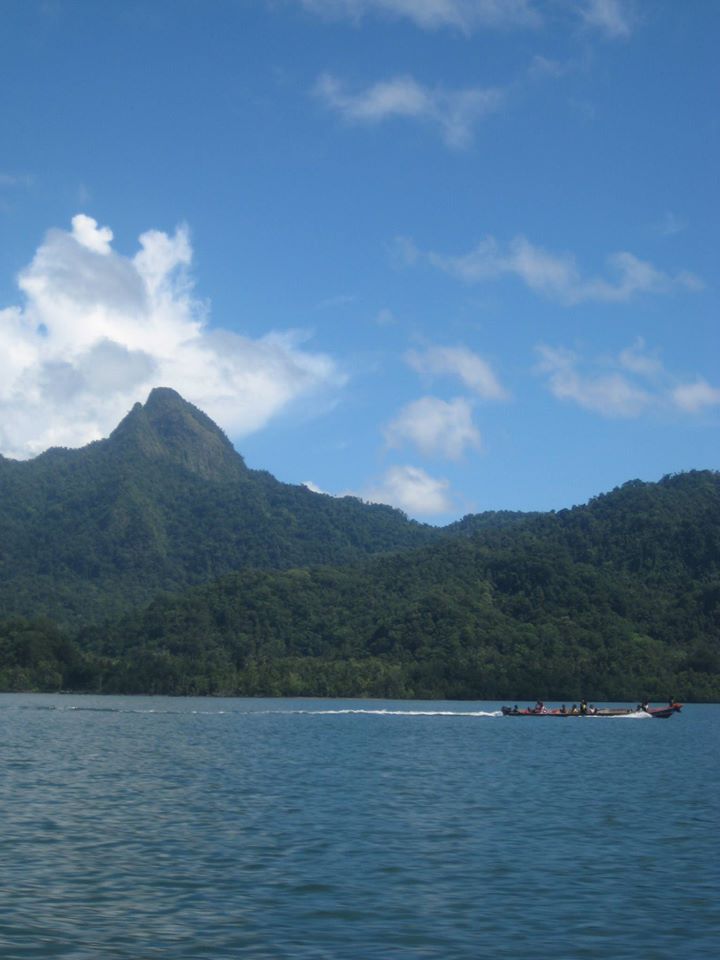
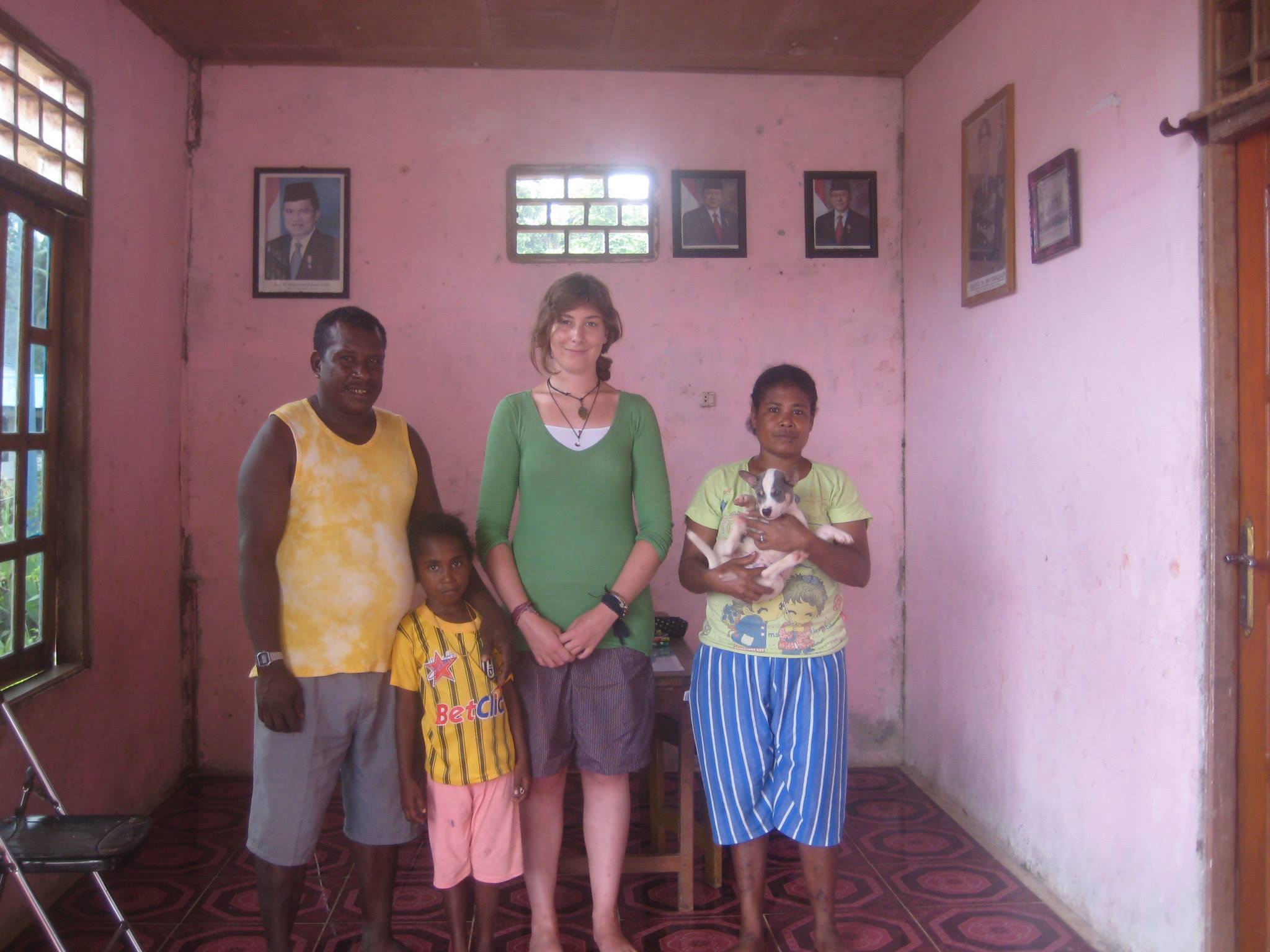

Ambel is a Raja Ampat-South Halmahera (Austronesian) language spoken by around 1,600 people in eleven villages around Mayalibit Bay and on the north coast of Waigeo island, Raja Ampat. The Ambel pride themselves on their humility, and many of them are actively working to protect their culture, and the biodiversity of their beautiful island. Unfortunately, the language is currently endangered: only those born before about the year 2000 speak the language, and only those born earlier than 1990 use the language on a daily basis.
Each of the Ambel clans has its own origin myth. For example, the origin of the Fiay clan involves a kind of shrimp that turned to metal when it was speared by a Fiay ancestor; the Gaman clan are said to be descended from the kings that give the Raja Ampat archipelago its name; and according to the Kein clan myth, their ancestor hatched out of the egg of a Waigeo brushturkey (Aepypodius bruijnii), deep in the jungle. These origin myths feed into local taboo systems: for example, members of the Fiay clan can't eat that kind of shrimp, and members of the Kein clan can't eat the Waigeo brushturkey. The Wakaf clan have a taboo against eating giant clams because, according to one myth, a Wakaf ancestor once married a clam who had turned herself into a beautiful woman. If someone were to break their clan's taboo, it's believed they would become blind and deaf, their teeth would fall out, and they would be covered in sores.
Here are some of the highlights from my time with the Ambel. The full documentation can be found at the Endangered Languages Archive.







